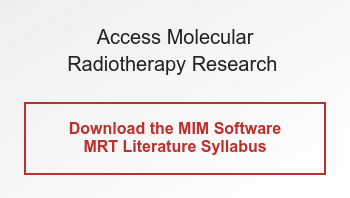Practical Dosimetry in Theranostics: A Guide for Resource-Constrained Clinics
Find out why personalized dosimetry is essential for radiopharmaceutical therapies and learn how to implement it effectively, even with limited resources.
April 2, 2025
Personalized Dosimetry Enhances Theranostics
The rapid adoption of PSMA-targeted Theranostics shows promise. The soon-to-be-completed Phase III trials PSMAfore, PSMAddition, SPLASH, and ECLIPSE investigate the use of these drugs in earlier-stage metastatic prostate cancers, potentially opening access to a vast population of patients.
Meanwhile, evidence is mounting that personalized radiation dosimetry is just as important for Theranostics as it is for external-beam radiotherapy (EBRT) and 90Y microsphere therapies.
Some selected highlights from recent research that points to the benefits of dosimetry in Theranostics:
- Warfvinge CF et al, J Nucl Med, 2024: “Our observations suggest a 90% probability of partial tumor response for an accumulated tumor-absorbed dose of at least 135 Gy.”1
- Hebert K et al, J Nucl Med, 2024: “The absorbed dose by tumors was significantly associated with tumor volume variation (P < 0.001) 3 mo after treatment end, and it was a significant prognostic factor for survival. Toxicity analysis showed a correlation between the decrease of hematologic parameters such as lymphocytes or platelet concentrations and the absorbed doses by the spleen or bone marrow.”2
- Mileva M et al, J Nucl Med, 2024: “Minimal tumor-absorbed dose at C1 [cycle 1] is predictive of outcome in patients with GEP-NETs [gastroenteropancreatic neuroendocrine tumors] treated with PRRT [peptide receptor radionuclide therapy], providing a basis for personalized dosimetry-guided treatment strategies.”3
Despite mounting evidence supporting the need for dosimetry in Theranostics, implementing a dosimetry regimen is often associated with increased resource requirements—and clinics are already stretched thin. If resource limitations are stopping your organization from implementing dosimetry, consider the points below.
Tailor Dosimetry to Existing Resources
Dosimetry can be tailored to the resources that are already available at your clinic. That’s what Jonathan Gear et al. demonstrate in their recent EANM Enabling Guide: How to Improve the Accessibility of Clinical Dosimetry.
The authors provide a roadmap for clinics that want to implement dosimetry but lack the resources of more established centers. Because Theranostics is often a multidisciplinary effort, the article walks through different possible staffing strategies depending on:
- Whether your team has access to a medical physicist.
- The availability of the treating physician to be involved in practical aspects like contouring.
- The familiarity of technologists with the dosimetry protocol.
Possibilities for getting the most out of existing imaging equipment are also covered, such as using stand-alone SPECT and CT acquisitions, and relying on reduced-time-point or single-time-point imaging techniques.
To help you get a concrete sense of the wide variety of possible approaches to implementing dosimetry, a supplemental guide is included with the article. The guide outlines two possible dosimetry strategies each for 131I-Sodium Iodide, 177Lu-DOTATATE, and 131I-MIBG with advantages and disadvantages.
Extend Resources with Automation
Organ segmentation and dosimetry calculations are examples of tasks that commonly require significant manual intervention.
Automated software tools can ease the manual burden and play a role in enabling dosimetry for Theranostics when staff resources are limited. These tools let you start the dosimetry process without having to do anything manually: quantitative SPECT reconstruction and AI-driven organ segmentation can be triggered to run with no manual input. Leveraging specialized algorithms, the dosimetry process itself can also be automated, flexible, and robust, with all relevant information packaged in a streamlined interface for physician review.
In short, automation can be the difference between personalized dosimetry and one-size-fits-all Theranostics.
Editor's Note
A previous version of this article appeared under the title “Don’t Let Resource Limitations Stop You from Implementing Personalized Dosimetry in Theranostics.” The article has been updated to include recent research.
Footnotes
- Warfvinge CF, Gustafsson J, Roth D, et al. Relationship Between Absorbed Dose and Response in Neuroendocrine Tumors Treated with [177Lu]Lu-DOTATATE. J Nucl Med. 2024;65(7):1070-1075. Published 2024 Jul 1.
- Hebert K, Santoro L, Monnier M, et al. Absorbed Dose-Response Relationship in Patients with Gastroenteropancreatic Neuroendocrine Tumors Treated with [177Lu]Lu-DOTATATE: One Step Closer to Personalized Medicine. J Nucl Med. 2024;65(6):923-930. Published 2024 Jun 3.
- Mileva M, Marin G, Levillain H, et al. Prediction of 177Lu-DOTATATE PRRT Outcome Using Multimodality Imaging in Patients with Gastroenteropancreatic Neuroendocrine Tumors: Results from a Prospective Phase II LUMEN Study. J Nucl Med. 2024;65(2):236-244. Published 2024 Feb 1.



